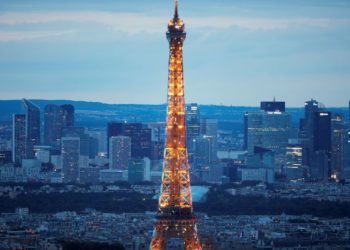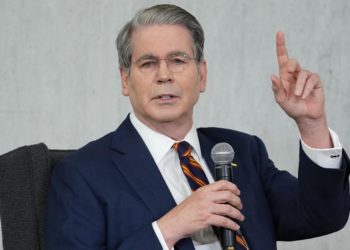The procession of the Sacred College of Cardinals file into the Sistine Chapel to begin the conclave to elect a successor to Pope John Paul I on October 14, 1978. Credit – Bettmann Archive—Getty Images
Today, the papal conclave convened and it is going to captivate the attention of the world for however long it lasts.
The fascination stems from the rarity, mystique, drama, and importance of conclaves, as well as the secrecy that governs them. Each conclave is by its nature a mixture of rumors, intrigue, and disinformation.
Observers understand the basic mechanics of the conclave: Cardinals will have informal meetings in the corridors, during meals, and in the chambers. Their goal will be to form a large enough coalition to secure the requisite 75% of the votes necessary to elect a pope. In the event of one coalition failing, its members may move to support another candidate as a bloc, or they could splinter and back different choices. Seen from the outside, the duration of the conclave can provide hints as to the difficulty or the ease with which the cardinals reach an agreement to appoint the next head of the Church.
But no one really knows what’s going on inside the conclave—and everyone wants information. So much so that, in the past, spies have assessed the dynamics at play, both before and during conclaves. They’ve gained valuable information about the most likely candidates and their support, which gives their governments a sense of how the conclave might turn out. These efforts reflect how countries across the globe see the Vatican as an important world power.
This history suggests that intelligence operatives around the world might be scurrying to glean any information they can. The Vatican’s security service assuredly has worked to prevent leaks. Yet, no system is foolproof. Even so, the nature of the conclave means that intelligence agencies still face a steep challenge in trying to give their governments a leg up in knowing the identity of the next Pope.
In theory, a conclave is a secret election: the cardinals gather together in closed quarters, without any assistants or any way of communicating with the outside world. In fact, it’s so buttoned-up that, since 1800, the ballot papers used in voting, as well as any notes taken during the assembly are burnt.
Yet, many are desperate to get any crumb of information possible about who will be the next pope. Due to the extraordinary powers of the Supreme Pontiff, the stakes are high. Thanks to the very particular, unique status of the Vatican, the Pope runs a sovereign micro-state, while also leading one of the world’s largest religious communities with some 1.3 billion members. Fairly or unfairly, popes are often credited with an outsized influence over the way the world is managed.
Read More: History Suggests Expecting the Unexpected From the Papal Conclave
This power has long drawn the interest of intelligence operatives across the globe, who have devoted considerable time and resources to spying on the microscopic Vatican—especially when it comes time to select a new Pope.
In the first half of the 20th Century, European powers commonly worked to influence the conclave ballots through their prelates and ambassadors. In return, the most political potential candidates made sure to curry favor with governments across the ideological spectrum. During the 1939 conclave, for example, the cardinals easily elected Eugenio Pacelli despite the simmering tensions engulfing Europe as it headed toward World War II. Pacelli offered a little something to all factions: he was Italian, spoke German, and had negotiated concordats with Italy and Germany, abstaining from condemning either regime. Meanwhile, he was also a notorious anti-communist, which had endeared him to his anti-Nazi predecessor Pius XI, and also enabled him to successfully engender trust from the British and the French.
The next four conclaves took place during the Cold War, which, given the global nature of the struggle between the U.S. and the Soviet Union, the sky-high stakes, and the power of the Vatican, drew the attention of both superpowers. Their intelligence operatives scrambled to keep their governments appraised of what might happen, and what the new Pope’s diplomatic posture might be.
When Pope John XXIII died in June 1963, the U.S. Central Intelligence Agency (CIA) sent a memo to President John F. Kennedy outlining what might happen. It explained that it was even harder than usual to predict the conclave outcome, because the college of cardinals had grown from 55 members in 1958, the last time a conclave had taken place, to 82. Many of the cardinals were new to their role, and it was much harder to identify their ideology than it had been in 1958 when, as the CIA explained, the cardinals fell into three major groups: “Liberal, Conservative, or Moderate.” The memo further noted that John XXIII had named 44 cardinals, some of whom were “far from being in the Liberal group.”
The memo concluded that Cardinal Giovanni Battista Enrico Antonio Maria Montini, defined in the memo as “among the strongly committed Liberals” would enter the conclave “as the favorite of the masses.” And the CIA proved right; his fellow cardinals selected Montini as Pope Paul VI.
The memo judged it “unlikely” that the cardinals would select a non-Italian pope. And after ruling out candidates older than John, that left only 13 candidates. Of these, several seemed improbable candidates because, in the estimation of the CIA, “they are known as definite opponents of Pope John’s policies.”
Perhaps, because of intelligence agencies’ capacity to correctly assess the internal dynamics of the Vatican like this, when Paul VI died 15 years later, the Camerlengo—the Cardinal in charge of organizing the transition—was intent on protecting the conclave from any possible espionage. He asked the director of the Vigilanza (the Vatican’s internal security service), to ensure that there would be no microphones.
According to Gordon Thomas and Max Morgan-Witts’ 1984 book Pontiff, the Vigilanza discovered that despite their caution, enterprising Radio Vatican journalists desirous of an international scoop engineered an audacious plan: they affixed a small transmitter in the shape of a shirt button on the clothes of a conclave staffer. It couldn’t capture voices directly, but it could send signals, like Morse code. The assistant was supposed to tap three times when the Pope was chosen.
After successfully thwarting this scheme, the Vatican security services were on the look out for radio transmitters or microphones during the subsequent four conclaves in August and October 1978, 2005, and 2013. Their efforts largely preserved the secrecy of the first three of these conclaves. But in 2013, like many other European states, the Vatican became a victim of the U.S. National Security Agency’s “big ears”.
Read More: How a New Pope Is Chosen—and Who It Could Be
That year, the Italian weekly, Panorama, stated that the cardinals and even Pope Benedict XVI had been the targets of bugging. The U.S. government formally denied all accusations of spying. A Vatican spokesperson also told journalists that they were not concerned about any reports of spying.
However, Panorama magazine maintained that the NSA picked up the prelates’ telephone conversations in the days preceding the conclave, giving them an idea of what might happen before the first vote. They likely paid special attention to the man who would become Pope Francis: Jorge Mario Bergoglio, who had been a focus of U.S. intelligence agencies since 2005, according to Wikileaks reports.
Given this history, it could be that, as 135 cardinals gather in Rome to select the next pope, various intelligence organizations are monitoring their activities. Pope Francis appointed 108 of these 135 cardinal electors, all without any experience in the voting process. Assuredly, the Vatican security services have briefed them on how to maintain secrecy in this environment. Since 2005, cell phones have been banned from conclaves; the residence of the cardinals has been thoroughly inspected; and signal jammers will make the place an “electronic bunker.”
The cardinals also won’t see much daylight during the conclave and outdoor conversations will be banned. Relatedly, opaque film will cover the windows of the cardinals’ residence.
Still, such precautions aren’t foolproof and there may still be leaks. But even if leaks happen, it would remain very difficult to monitor, let alone influence, the interactions of such a large group of people, most of whom don’t know each other.
Yet, this may not stop intelligence agencies from trying. The stakes are simply too high, and the Pope has too much influence for governments not to look for a leg up in determining who will win election.
Yvonnick Denoël is the author of Vatican Spies, from the Second World War to Pope Francis, published by Hurst.
Made by History takes readers beyond the headlines with articles written and edited by professional historians. Learn more about Made by History at TIME here. Opinions expressed do not necessarily reflect the views of TIME editors.
Write to Made by History at [email protected].
The post Why Papal Conclaves Have Drawn the Attention of Spies appeared first on Time.




